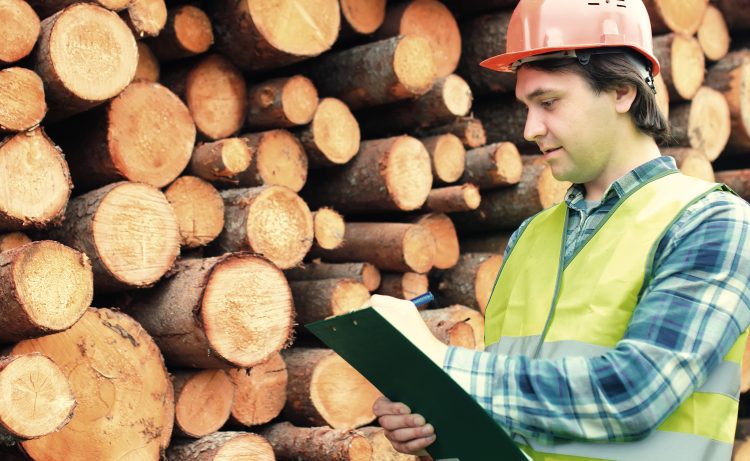Tariffs touch a wide range of imported goods, but one product the real estate and construction industries have been keeping especially close eyes on is lumber imported from Canada. Lumber is one of the primary building materials of homes and if prices on it go up, that directly hits construction workers and costs in turn get passed on to homebuyers.
Joel Berner, senior economist at Realtor.com, said as much in a recent press release, though he noted the general economic impact of tariffs can and will reverberate back on consumer decision-making too.
“When people are worried about job security, as 24% of respondents said in today’s Fannie Mae HPSI survey, they’re less likely to make a major financial commitment like buying a home,” said Berner. He continued: “Homes are sitting on the market longer and sellers are cutting prices more frequently. Added uncertainty will only deepen those trends. Tariffs also mean higher overall prices for consumers, which can erode savings and make it harder to afford a down payment.”
Those prices look to be rising soon and high. Late in July, the U.S. Commerce Department conducted an annual review of the “anti-dumping” order on Canadian lumber. (Dumping refers to when an exporter sells goods in an international market at less than domestic prices, so as to undercut domestic competition.)
Due to findings that dumping of Canadian lumber had increased since the previous review, the anti-dumping tariff rate was raised from 7.66% to 20.56%. This would be paid in addition to the countervailing 6.74% tariffs established by the World Trade Organization—and the countervailing tariff is due for review in August that could see it rise too.
Areas in the U.S. that have authorized the most new construction of homes could be the most hit by tariff-driven price increases on this key building material. Analysis by construction industry research firm Construction Coverage found that, in 2024, the states that had approved the most new housing units total were large and highly populated states such as Texas (225,756), Florida (173,326) and California (101,545).
Metro areas that approved the most total new housing units in 2024 were Dallas, Texas (71,788), Houston, Texas (65,747), New York City, New York/Newark, New Jersey (57,929), Phoenix, Arizona (45,884) and Atlanta (40,687).
The report, though, accounts for the fact that larger and more populated areas are naturally more likely to build more housing—metro areas that approved the most new construction relative to existing supply included Idaho Falls, Idaho (40.7 per 1,000 existing units), Punta Gorda, Florida (35.9), St. George, Utah and Wilmington, North Carolina (both 35.6) and Ocala, Florida (33.7).
Among specifically large metro areas, Raleigh, North Carolina (28.8 new units per 1,000 existing units), Austin, Texas (28.6) and Dallas, Texas (22.2) were singled out as ones leading new housing construction.
“Despite recent slowdowns, many of these regions remain among the nation’s top markets for new housing development, reflecting ongoing demand and more favorable building conditions,” the report said. Depending on how steeply tariffs increase the price of tariffs, these areas’ homebuilding efforts could retract or new homes could grow more expensive.
As for the price impacts outside the U.S. Canadian Prime Minister Mark Carney has said his government will supply $1.2 billion to Canadian lumber producers to deal with the higher costs of anti-dumping and countervailing tariffs. It remains to be seen what impact or alleviation this assistance could have on lumber import costs.
In a blog post from the National Association of Homebuilders (NAHB) on July 28, the association said that while it is “disappointed by this decision to raise lumber tariffs, it is part of the regularly scheduled review process the United States employs to ensure adequate relief to American companies and industries impacted by unfair trade practices.”
The post noted the NAHB’s consistent track record of lobbying against raising Canadian lumber tariffs. The NAHB also affirmed in the post that it will continue calling the Trump administration to carefully weigh the impact on home prices when making decisions on lumber tariffs.
The exact prices of and implementation of tariffs remains in deep flux, as do businesspeople’s projections about when the uncertainty over tariffs will end.
As of Friday, August 1, the Trump administration had raised the U.S. tariff rate on Canadian imports from 25% to 35%, but certain goods (including lumber) that qualify for “preferential treatment” under the existing U.S, Mexico and Canada trade agreement will not be subject to the 35% rate.
“We are also urging the administration to move immediately to enter into negotiations with Canada on a new softwood lumber agreement that will provide a fair and equitable solution to all parties and eliminate tariffs altogether,” the NAHB blog post ended.












